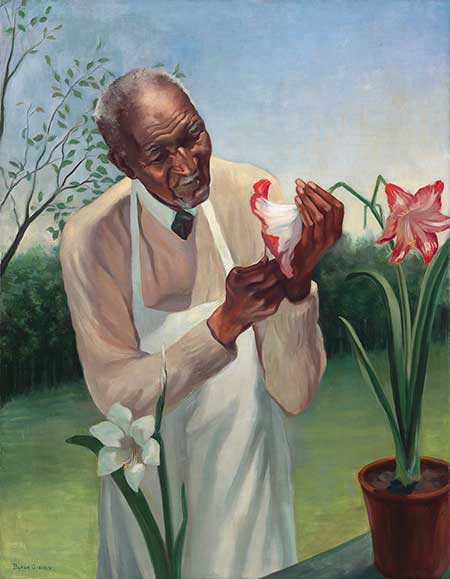Born into slavery at the end of the Civil War, George Washington Carver (1864–1943) overcame the dual obstacles of slender means and racial discrimination to become the director of agricultural teaching and research at Alabama’s Tuskegee Institute. His laboratory investigations there led to the discovery of more than 450 new commercial products—ranging from margarine to library paste—that could be extracted from previously untapped sources such as the peanut, the sweet potato, and various other cultivated plants.
In the process, Carver demonstrated for many southern farmers the wisdom of diversifying crops, instead of relying mainly on the soil-exhausting crop of cotton. His work brought him international recognition, and Carver himself became known as the “miracle worker.”
Carver accepted a multitude of honors in the course of his career, but he had refused all requests for portrait sittings to commemorate his accomplishments until he saw an example of Betsy Graves Reyneau’s work. Reyneau, he concluded, painted “the souls of people,” and he consented to pose informally for her. Created just three months before the scientist’s death, Reyneau’s portrait is the only known likeness painted of Carver from life
